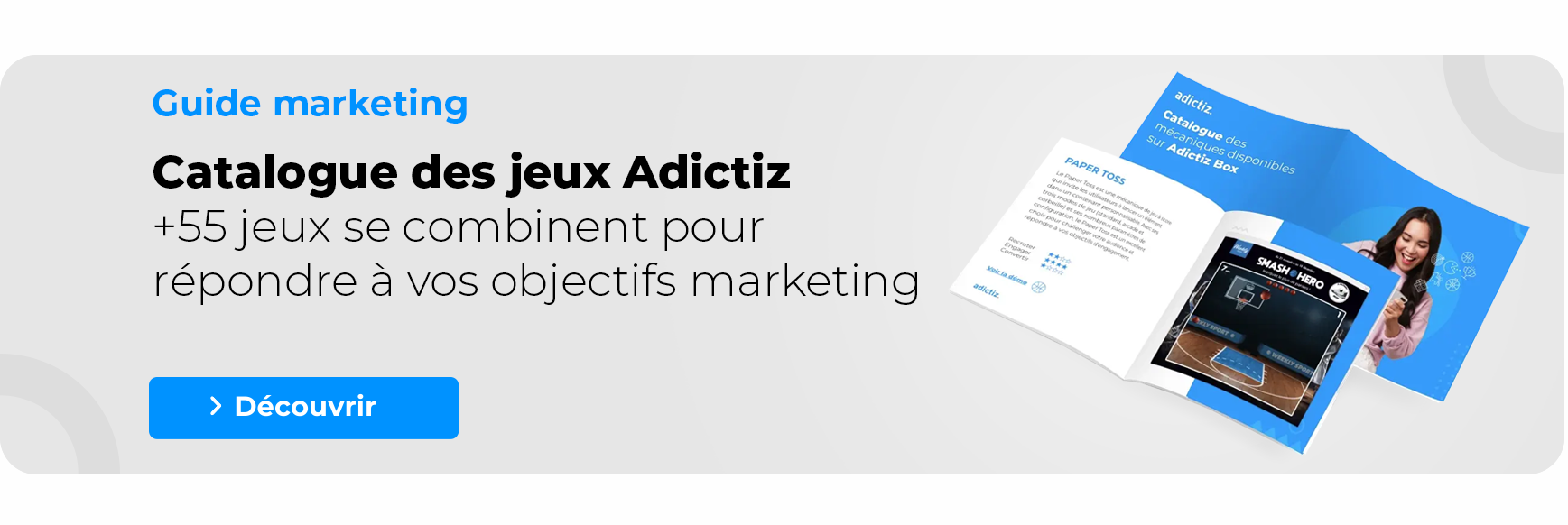Interactive marketing is completely changing the relationship that companies have with their audience. Indeed, traditionally, marketing has been a one-way conversation. Whether it’s an advert on television or a publication in the press, until now consumers have had very few ways of interacting with brands.
However, with the internet and social networks, this is no longer the case. We can now comment on a brand’s posts. You can also ask them questions during a livestream, or send suggestions for their next collections.
In this article, we take a look at how brands and customers interact and the best ways to nurture this bond.
What is interactive marketing?
Interactive marketing focuses on how customers and prospects interact with a brand. Therefore, it involves creating content or broadcasting a message that elicits a reaction.
This interactivity can take several forms:
- from the simplest: a like or a comment on a publication
- more advanced interactions: sharing UGC (User Generated Content) or taking part in an interactive advertising competition.
This also represents a major change in the way companies communicate. In fact, customers are not just the target of a marketing campaign. They are becoming the main players.
What’s more, the aim of interactive marketing is not to encourage a prospect to buy a product (contrary to traditional advertising). The prospect is invited to interact with the marketing content, whether by taking part in a competition, completing a survey or by Playable Ads game.
This customer-focused strategy strengthens the relationship between the brand and the customer. The brand shows greater consideration for the customer (by asking for their opinion or offering rewards).
But it also enables companies to collect and activate first-party data. Interactive content triggers actions that enable the brand to better understand the expectations of its consumers. More effective in meeting their needs!
The different types of interactive marketing
In fact, interactive marketing encompasses many different types of initiatives and formats. It depends on the objectives it wishes to achieve, but also on its brand universe and the characteristics of its audience. Companies can choose their interactive content from the following options:
Interactive storytelling
A very simple form of interactive marketing is simply to make your content more dynamic. This might involve adding animations or infographics to a newsletter or blog post.
However, companies can go further by inviting readers to give their opinion by sharing a quiz to test their knowledge of the subject covered.
Personalised marketing content
Interactive content essentially makes it possible to collect first-party data. Then, this data can be used to propose other content and personalised offers that are more relevant to customers.
The more companies know about their audience, the more they can :
- create qualitative experiences (which will make them want to interact with them).
- direct them to the right offer (via product recommendations).
Two-way interactions
This is the ultimate level of interactivity between a brand and its audience. Indeed, these offer consumers a more active way of participating, thanks to animations such as quizzes, simulators, marketing games and interactive videos.
The customer becomes the hero of the marketing support and acts in a concrete way to achieve a goal. For example, to win gifts or loyalty points, test their knowledge, access exclusive content, etc.
The benefits and challenges of interactive marketing
Interactive marketing offers significant advantages for brands, especially in a context where consumers expect brands to interact with them in a much more active way.
Anchored in the behaviors and expectations of its customers, interactive content makes it possible to respond better to their needs and therefore increase sales. The personalisation associated with interactive marketing not only leads to more conversions, but also greater retention of existing customers.
Overall, interactive marketing can :
- boost sales,
- improve customer satisfaction
- and open the door to automated marketing.
But this marketing strategy also presents challenges. One of the main obstacles companies will have to overcome is choosing the right interactive format and channel to distribute it. There are many options, so brands will need to target the most relevant content and distribution strategies according to their objectives.
4 examples of interactive content
For companies wishing to embark on interactive marketing, there are several formats to choose from. Some of the most effective are :
- The marketing game: creating an engaging interactive competition is the most obvious way of encouraging your community to interact with your content. Whether you’re launching a wheel of fortune/a one-armed banditby participating in a quiz or by submitting a photo as part of a competition, the customer is the key player in the campaign.
- Live shopping: live streaming makes it easier to talk to your audience, answer their questions and show your products in a more interactive way.
- UGC: user-generated content is an interesting way of turning customers into brand ambassadors in their own right.
- Chatbots: this conversational marketing tool is also inherently interactive, as it allows you to engage in conversation with your prospects. AI makes it easy to automate and personalise these exchanges to best meet the needs of the person you are talking to.
What tools should you use to get started in interactive marketing?
To set up a successful campaign, brands need to be able to rely on tools that make it easier for them to produce content engaging on the one hand. But they will also need solutions to facilitate the collection and activation of the data that this interactive content can generate.
In a recent study conducted by Salesforce, marketers describe the tools they use most to create interactive content;
- 90% of participants use a CRM to facilitate data collection and follow-up for each lead;
- 89% use ABM platforms (i.e. self-service platforms for pushing personalised messages to your target accounts). With Adictiz, for example, you can easily choose your interactive game format and manage your marketing campaign from A to Z (personalisation, distribution, segmentation of collected data and retargeting);
- 62% use Artificial Intelligence to help personalise their interactive content.
Interactive marketing is therefore a very interesting way of engaging your audience and reactivating your prospects at every stage of the conversion funnel. Don’t hesitate to request a demo of our solution for integrating interactivity and gamification into your future marketing campaigns!











